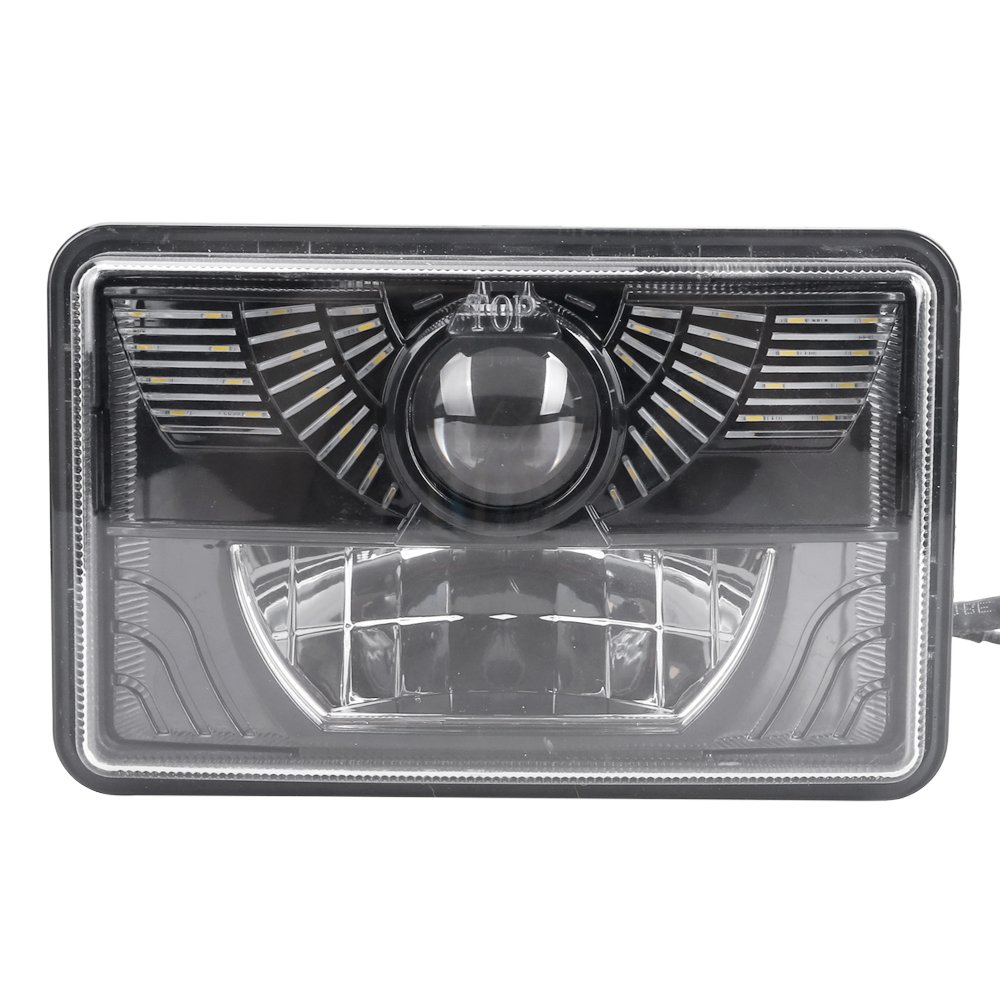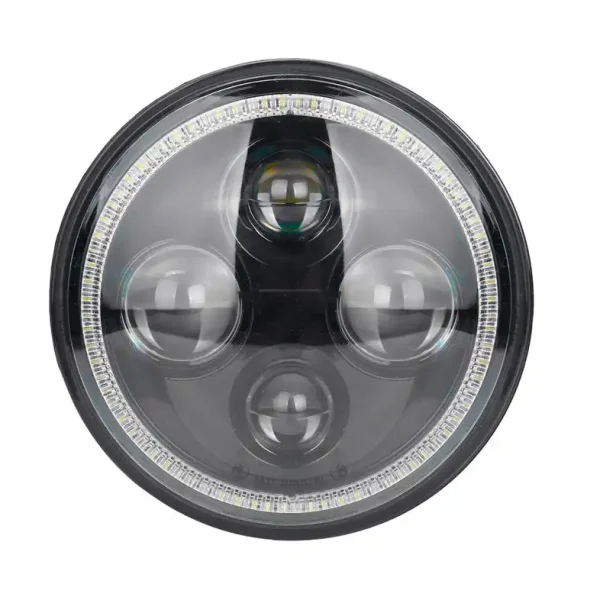Introduction
In the rugged and unpredictable world of off-road driving, visibility is more than a convenience—it’s a necessity. Whether navigating through rocky terrains at dusk or cruising on a dusty trail after sunset, having the right lighting can make all the difference between a thrilling adventure and a precarious situation. This is where LED off-road lights come into play, not just as an enhancement to your vehicle’s appearance, but as a crucial upgrade to your night-time driving safety and efficiency.
LED off-road lights have surged in popularity among outdoor enthusiasts and adventure-seekers, thanks to their superior brightness and energy efficiency. Unlike traditional halogen lights, which can drain your vehicle’s battery quicker and burn out sooner, LED lights are designed to last longer and perform better, making them an ideal choice for those who demand reliability and performance from their equipment. This article dives into the different types of LED off-road lights available, their benefits, and essential tips on selection, installation, and maintenance to help you make the most out of your off-road lighting system.
Let’s start by exploring what LED off-road lights are and the variety of options available to enhance your off-road experience.

Understanding LED Off-Road Lights
LED (Light Emitting Diode) technology has revolutionized the way we light up the night, especially when it comes to off-road driving. These lights are not just popular among enthusiasts for their modern look; they are profoundly more efficient and practical than traditional lighting options. Here, we break down the different types of LED off-road lights you can equip your vehicle with; each designed to meet specific lighting needs and preferences.
1. Light Bars: These are the most common type of LED off-road lights. Stretching horizontally, either on the roof or the front bumper, light bars provide a wide, uniform light that illuminates vast areas of darkness ahead. They come in various lengths and are suitable for trucks, Jeeps, ATVs, and more, ensuring that no matter how wide the trail, your path is brightly lit.
2. Pod Lights: Smaller than light bars, pod lights offer focused lighting that can be directed to specific areas. They are highly versatile and can be mounted in various locations, such as beside the headlights, on the roof, or even on the rear of the vehicle. These lights are perfect for drivers who need additional lighting at specific angles for activities like rock crawling or when navigating through tight spaces.
3. Upgraded Headlights: Replacing standard vehicle headlights with LED versions can significantly improve your night-time visibility. LED headlights are brighter and have a longer range than traditional halogen bulbs, which helps in spotting obstacles from a distance. This type of light is ideal for those who frequently drive off-road at night but also require a lighting solution that is effective on paved roads.
4. Fog Lights: LED fog lights are designed to cut through adverse weather conditions, providing better ground-level visibility. Their light is usually wider and more scattered, which helps illuminate the road immediately in front of the vehicle during foggy or misty conditions, ensuring safer travel.
Each of these types of LED lights offers unique benefits and can be used in combination to provide comprehensive lighting solutions for any off-road scenario. By understanding the distinct characteristics of each, you can tailor your vehicle’s lighting system to your specific outdoor adventures, ensuring that you have the right light for every trail and task.

Advantages of LED Lights for Off-Road Driving
LED off-road lights offer numerous advantages over traditional lighting options like halogen and HID (High-Intensity Discharge) lights, making them a top choice for vehicle enthusiasts who venture beyond the paved roads.
1. Energy Efficiency and Longevity: One of the most significant benefits of LED lights is their energy efficiency. They consume less power than halogens and HIDs, which not only conserves your vehicle’s battery life but also provides a longer lifespan for the lights themselves. LEDs can last for tens of thousands of hours, far surpassing the operational lifespan of traditional bulbs.
2. Enhanced Brightness and Visibility: LEDs are known for their superior brightness, which is crucial for off-road driving where terrain can be unpredictable and poorly lit. This brightness doesn’t just improve visibility—it enhances safety, allowing drivers to see obstacles from greater distances and react in time.
3. Durability in Harsh Conditions: Off-road lights are not just used in any setting; they face the rigors of off-road environments where impacts, vibrations, and adverse weather are the norms. LED lights are built robustly, designed to withstand such conditions without succumbing to damage easily. Their solid-state construction means they are less likely to break or malfunction due to bumps and shocks encountered on rough terrains.
4. Versatility in Design and Use: LED lights are available in various designs and sizes, allowing customization to fit different needs and vehicle types. Whether it’s a narrow beam for distant viewing or a wide beam for flood illumination, LEDs can be configured to provide the exact type of light needed for any off-road situation.
5. Improved Aesthetic Appeal: Beyond functionality, LEDs offer an aesthetic upgrade to vehicles, giving them a modern and sleek look that is visually appealing. This style enhancement is coupled with the practical benefits, making LEDs a popular choice for both functional and cosmetic upgrades.
These advantages make LED off-road lights a worthwhile investment for anyone serious about off-road driving. They not only improve the driving experience by providing better visibility and reliability but also contribute to the vehicle’s efficiency and appearance.
Choosing the Right LED Off-Road Lights
Selecting the ideal LED off-road lights involves more than just picking the brightest option available. It requires considering several factors that ensure the lights will perform optimally for your specific needs and circumstances. Here’s how to choose the best LED off-road lights for your vehicle:
1. Vehicle Compatibility:
Before investing in any lighting system, ensure the lights are compatible with your vehicle type and model. This involves checking mounting options, electrical compatibility, and whether the size and shape of the lights suit your vehicle’s design.

2. Light Type and Beam Pattern:
Depending on your driving conditions, you may need different types of lights. For broader visibility, a light bar might be ideal, while pod lights can be perfect for targeted illumination. Also, consider the beam pattern—spot beams for distance, flood beams for wide area coverage, or a combination of both for versatility.
3. Legal Regulations:
Always check the local laws and regulations regarding off-road lights. Some areas have restrictions on the type of lights you can use on public roads or the brightness levels allowed. Ensuring your lights are legal will keep you from running into trouble with law enforcement.
4. Quality and Durability:
Look for lights made with high-quality materials that promise durability and weather resistance. Off-road driving can expose lights to extreme conditions, so choosing lights designed to withstand impacts, water, and dust is crucial.
5. Budget and Warranty:
Establish a budget and try to find the best quality within that range. Additionally, consider the warranty offered by the manufacturer. A good warranty not only reflects the confidence of the manufacturer in their product but also protects your investment in the long run.
6. Installation and Maintenance:
Consider how easy it is to install and maintain the lights. Some LED lights come with plug-and-play setups, which are easier for DIY installations. Also, look for lights that require minimal maintenance to keep them functioning optimally.
7. Reviews and Recommendations:
Lastly, check reviews and seek recommendations from other off-road enthusiasts. Their experiences can provide valuable insights into the performance and reliability of different LED off-road lights, helping you make a more informed decision.
By carefully evaluating these factors, you can ensure that your investment in LED off-road lights enhances your driving experience, safety, and vehicle functionality.
Installation and Maintenance Tips for LED Off-Road Lights
Proper installation and regular maintenance are crucial for maximizing the performance and lifespan of your LED off-road lights. Here are some guidelines to ensure your lights function effectively and continue to do so for years to come.

Installation Tips:
1. Preparation: Before you begin, make sure your vehicle’s engine is off and the area is clean. Gather all necessary tools and parts specified in the installation kit.
2. Mounting: Decide on the mounting location that best suits your needs and vehicle design. Common spots include the front bumper, grille, or roof. Ensure that the mounting area can support the light securely without drilling or modifications that could affect your vehicle’s structure or warranty.
3. Wiring: Follow the manufacturer’s wiring instructions carefully. Connect the lights to the power source using the wiring harness. If you’re not experienced with electrical installations, consider having a professional perform this step to avoid any issues.
4. Testing: After installation, test the lights to ensure they work correctly before heading out. Check for proper alignment and adjust as necessary to avoid blinding other drivers and to maximize the lighting of your path.
Maintenance Tips:
1. Regular Cleaning: Keep the lights clean from mud, dust, and debris, which can diminish brightness and potentially cause overheating. Use a mild soap and water solution and a soft cloth to avoid scratching the lenses.
2. Check Connections: Periodically check all wiring connections for tightness and signs of wear or corrosion. Loose or corroded connections can lead to reduced performance or failure.
3. Inspect for Damage: Regularly inspect the light housings and mounting points for any signs of damage or fatigue. Early detection of issues like cracks or water ingress can prevent bigger problems down the road.
4. Lens Care: If your lights have protective covers or lenses, check them for scratches or cloudiness, which can reduce effectiveness. Replace covers as needed to maintain optimal light output.
By following these installation and maintenance tips, you’ll ensure that your LED off-road lights are always ready to illuminate your adventures, keeping you safe and enhancing your driving experience on and off the road.
Conclusion
LED off-road lights are not just an accessory; they are an essential part of any serious off-road setup. With their superior brightness, energy efficiency, durability, and style, they provide significant advantages over traditional lighting solutions. By choosing the right lights for your needs, installing them correctly, and maintaining them regularly, you can enjoy enhanced visibility and safety on your off-road journeys, no matter how tough the terrain.

Upgrading to LED off-road lights can transform your nighttime driving experience, making every off-road adventure safer and more enjoyable. Remember, the right light not only shows the way—it can also lead the way to new and exciting off-road experiences.
Call to Action:
Ready to revolutionize your off-road driving experience with the unmatched power of LED lights! Dive deeper into the world of Dual Vision LED lights and discover our comprehensive range of LED Automotive lights now and light up your journey with confidence and style!
